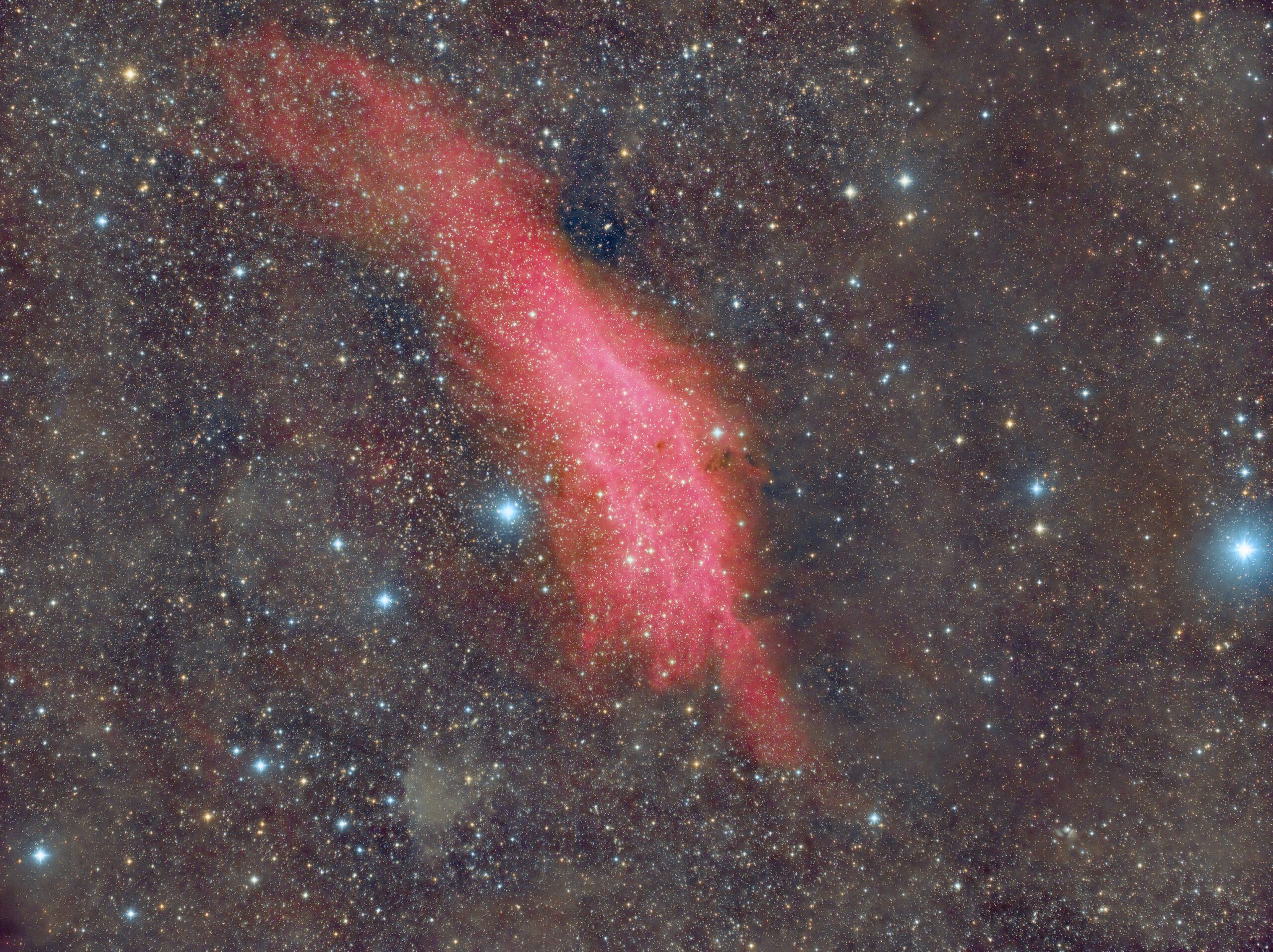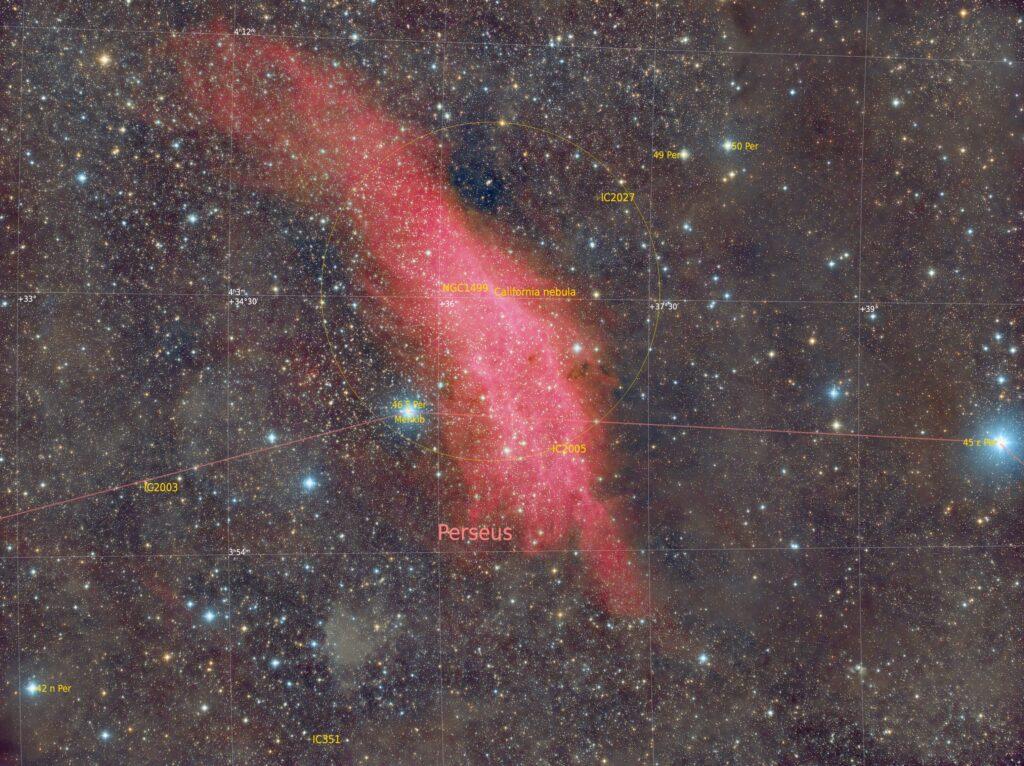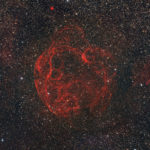The California Nebula – NGC 1499 – is a vast hydrogen gas emission nebula about 1000 light years away in the constellation of Perseus. It is named as such because of its vague resemblance to the US state of California.
It is a very large, faint and diffuse object, about four times the diameter of the moon. It is almost completely invisible visually without specialist filters and was not discovered until the advent of astrophotography in 1884. The nebula shines by reflecting the light of the bright star Markib. It shines red because Hydrogen atoms, when excited by nearby bright sources like stars, emit or re-radiate light at the 656nm wavelength which is in the red part of the spectrum to our eyes.
Image Technical Data
The California Nebula is so large that most telescopes cannot get the nebula in the field of view, nowhere near in fact. It is of course possible to create multi-panel mosaic images but these take a great deal of imaging sky time, something in very short supply in the UK rain and cloud infested skies! DSLR lenses are perfect for this type of wide field imaging, however. This image is almost eight degrees across by six degrees and was made with my wide field DSLR lens portable set up in my backyard, December 7th 2019. Samyang 135mm DSLR lens connected to Moravian Instruments G2-8300 cooled CCD camera and Astrodon E-series RGBHa (3nm) filters, all mounted on my Skywatcher NEQ6 mount.
All exposures binned 1×1:
Red > 14 x 300s ; Green > 8 x 300s ; Blue > 8 x 300s ; Ha(3nm) > 18 x 300s
To give a total integration time of four hours.
Captured with Sequence Generator Pro and processed with PixInsight.






Comments are closed.